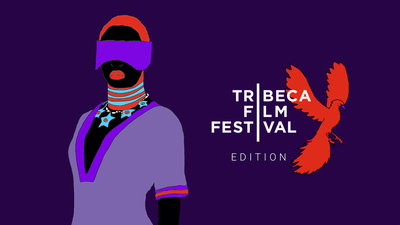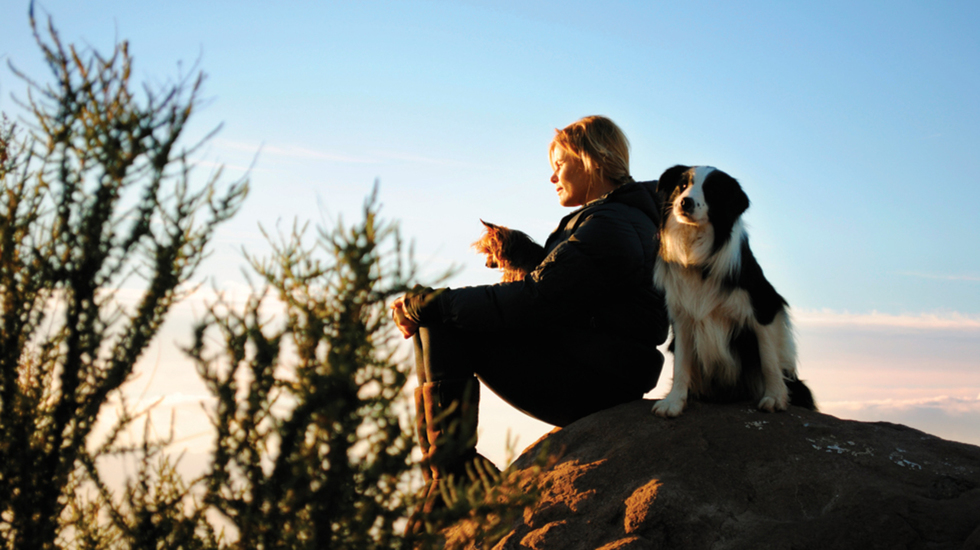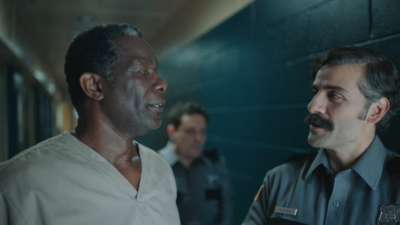
BY KAREN KEMMERLE |
Filmmaker Barbara Kopple on ‘Running From Crazy’ and The Burden of Legacy
We spoke with Oscar-winning documentarian Barbara Kopple about filming her latest project, working with Mariel Hemingway and her unique editing process.

Barbara Kopple’s new documentary, Running From Crazy, celebrated its New York premiere at last year’s Tribeca Film Festival. In this moving film, actress and icon Mariel Hemingway, the granddaughter of Ernest, fearlessly examines her family’s personal demons and patterns of suicide as she tries to avoid the same fate for herself and her daughters. Aided by some remarkable footage shot by Margaux Hemingway before her death, Kopple explores the Hemingway family history, especially that of Mariel, Margaux and Muffet, and focuses on their shared battle with mental illness.
We spoke with director Barbara Kopple about the famous family, the bonds of sisterhood, and the most dramatic change in documentary filmmaking that she has seen during her 40-year career.
Tribeca: Mental illness is a somewhat taboo topic in our society. Have you always been interested in making a documentary about the subject?
Barbara Kopple: No, I haven’t, even though I actually studied clinical psychology in college and my son is studying psychiatry during his residency at St. Luke’s Roosevelt. I got involved in the project because OWN actually called me and asked, “How would you like to do a film about Mariel Hemingway?”
Of course, I said yes, but what I didn’t realize is that they were calling Mariel at the same time asking if she’d like to do a film about her family. She responded: “Are you kidding me? They’re crazy, why would you want to do a film about them?” OWN got us together for a breakfast meeting, and we just chatted away like girlfriends. I met her daughters, and we forged a bond. Mariel wanted to go as deep as I did into her personal history and that of her family. In my films, I really like to go under the surface, and because we both wanted the same thing, it was a good match.
Tribeca: The Hemingway family has been a subject of fascination for many people for nearly half a century. How familiar were you with the family already?
BK: Not at all. Like everybody else, I had read Hemingway books and I knew that Mariel was in Manhattan and Personal Best. I knew a little bit about Margaux, but my knowledge was pretty surface level. That’s another thing that interested me about making the film. I really wanted to find out what this family was all about.
Tribeca: Mariel has two gorgeous daughters, Dree and Langley, who are just beginning to learn about their family history.
BK: Not only that, none of them knew much, including Mariel. They didn’t read Ernest’s books, and he was never talked about. They knew he was a great writer, but his life was ultimately kept secret. They understood that he was a WWI vet who hunted and fished, but his demons were never discussed by the family.
Tribeca: Is this documentary almost a cautionary tale for Dree and Langley? How do you think that they as sisters reacted to watching their own mother with her sisters?
BK: I hope they see it as a film about love and communication. I think the reason Mariel participated in the documentary was for her kids. She wanted to do it for others as well, but I guess you have to start at a certain spot. She was so insistent on telling all in this film. All of us know someone with mental illness, suicidal tendencies, or someone who actually has committed suicide. We’re not going to change the problems these people face unless we talk about them. That’s what this project was all about.
The Hemingway family in general was so complex – there was love, jealousy, illness, and unhappiness – so many different elements. For me, this is a film about family, relationships, and generations. More than a cautionary tale, it is the story of three sisters, and it’s about hope, transformation, and being able to put yourself out there as who you are.
No matter how the medium or equipment changes, you still have to have the heart, soul, and ideas you bring to a piece.
Tribeca: Though Mariel was not born before Ernest killed himself, the impact on her family, her life and the lives of her daughters is staggering. Were you aware of the burden of his legacy?
BK: To have a family with seven suicides is just beyond belief. In the documentary, Mariel talks about how she believed they were somewhat of a WASP-y family. She thought every family was like theirs. Mariel thought everyone fought, threw glass, and slept in separate bedrooms. She thought that was the norm.
Tribeca: The footage from Margaux’s unfinished documentary on the family was mesmerizing, and the audience gets to know her through her film. How did you find the footage? What was your initial reaction?
BK: That was the real treasure for me. Margaux had done an hour-long documentary; I think it was shown twice, called Winner Take Nothing, but there were 43 hours of other material that we were able to look at. It was such amazing, powerful footage. You really get to take a step in to the Hemingway family and see what they’re all about.
We really got to know Margaux as a person—how beautiful and warm she was. All she wanted was love. She was so charming, sultry, and talented, but so lonely. It just breaks your heart.

Tribeca: Throughout the footage, Margaux expresses resentment towards Mariel and other members of her family. Did this surprise you?
BK: Mariel expressed the same sentiment to me. They were all jealous of each other. They were all fighting for love, wanting to be adored, cared about, and embraced. Mariel confirmed this family dynamic without being aware that I had the material from Margaux’s documentary.
So after I’d spent some time with Mariel, I’d go back and I’d find similar reactions and feelings in the Margaux footage. Once Mariel described a scene from her past with some very specific details about her mother sitting on the counter of their yellow and blue kitchen with her legs up on the counter.
When I showed Mariel the film in its almost final cut, she got very emotional when she saw all of this footage of Margaux and of her parents’ kitchen. She just sat on the edge of her chair and was fascinated because she thought she had been imagining that image of her mother. She couldn’t believe the memories were real. She also felt really good because her daughters had never seen their grandparents. It was quite amazing.
Tribeca: Though she’s an actor, I was really surprised by Mariel’s intimacy and honesty with the camera. As an interviewer, how do you go about making your subjects feel comfortable enough to share their experiences?
BK: I think that being honest with the camera is something they must want to do. Mariel already wanted to share her story, and, there was a great level of trust between us. When I make a documentary, I love my characters and the people I’m filming. I want to create an environment in which they feel safe and comfortable, so they can say whatever they need to say.
You can’t have an agenda; you just have to let the film take you where it will.
Tribeca: With the variety of different footage, what was the post-production process like?
BK: It was an exciting process. We had so many different levels of materials that we could go deep and find things out about all of the family members. The editors put little index cards along the wall with all of the different scenes on them. The first cut was five and a half hours so we knew we had to trim the film way down. We’d take things out and try things differently and argue. It’s what you do in any situation where you take on a creative endeavor.
Tribeca: It must have been a challenge to whittle a story down from five hours to two.
BK: It’s like taking a block of wood and crafting it into something. You can’t have an agenda; you just have to let the film take you where it will. Sometimes you’re in a terrible place with it, and then, suddenly, things become seamless.
Tribeca: It is no wonder that Mariel is so involved with suicide prevention and with raising awareness of mental illness. I assume the overall reaction to this documentary has been positive.
BK: Well, everyone has his or her own agenda. Some psychiatrists and therapists saw it and opined that we should have interviewed psychiatrists and therapists for the film, but that wasn’t what the film was about at all. For me, the point of the project was being able to work with Mariel, who is one of the most positive people I know. She is so honest and brave and has an enormous capacity for self-reflection.
Tribeca: Established directors like Spike Lee and Paul Schrader have turned to Kickstarter to fund their latest projects. Would you ever use the crowdfunding site? How vital has this tool become for emerging/beginning filmmakers?
BK: Of course. It’s a lot of work, but you need to keep your projects coming. I think Kickstarter and social media are positive because they get people talking and understanding what their projects are about. They are making all of our communications more fluid. I think this trend is wonderful.
Tribeca: You made your first documentary, Harlan County U.S.A, in 1976. Over your nearly 40-year career, what’s the biggest change in documentary filmmaking you’ve witnessed?
BK: When I first started, I was shooting on 16mm. The equipment has always been the biggest change. But no matter how the medium or equipment changes, you still have to have the heart, soul, and ideas you bring to a piece. I don’t think that will ever change. You have to always put storytelling first.
Tribeca: When making an independent documentary like this, how important is social media to start buzz?
BK: Very important because you want to build a community. You want this film to reach the people it needs to reach.
Tribeca: What is the best documentary you’ve seen this year?
BK: Filmmakers in a documentary community really support each other. So to say one work is better than another is really hard. [laughs] When one of us does well, we all do well. We’ll look at each other’s rough cuts and help each other because we all want each other be successful. So I really couldn’t say.
Running From Crazy is currently playing at Angelika Theater in NYC.

